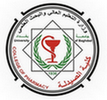The Faculty of Pharmacy discussed the Synthesis, Characterization, and Preliminary Anti-microbial and Anti-inflammatory Evaluation of New Ketorolac Derivatives by Aliaa Ahmed Ali and the supervisor, Lecturer Dr. Muthanna S. Farhan, in the pharmaceutical chemistry Department. The thesis aimed to synthesize a new series of ketorolac derivatives that A new derivative of ketorolac was synthesized with hydrazone and oxadiazoe moieties, and both anti-inflammatory and anti-microbial effectiveness were evaluated. The new derivatives were produced by condensation of ketorolac hydrazide with various aromatic aldehydes, such as 3-thiophencarboxyaldehyde, syringaldehyde, dimethylaminobenzaldehyde, and others, to produce ketorolac hydrazones (compounds 3a–h), and ketorolac hydrazide with CS2 to produce oxadiazole 2-thione (compound 4), which then reacted with two aryl groups haides, namely 4-Bromo-phenacylbromide and 4-methoxy-phenacylbromide, to form (compounds 5a–b). Thin-layer chromatography was used to monitor the reaction’s progress. ATR-FTIR spectroscopy was used to identify the functional groups in the produced molecules. 1H NMR spectroscopy was used to confirm the target compounds’ chemical structures. The preliminary anti-inflammatory activity was evaluated in vivo using the egg-white-produced edema technique. The compounds (3a–h, 5a–b) were examined in albino rats. The compounds 3a, 3c, and 3e showed effects that were equivalent to those of Ketorolac in reducing paw thickness. while compounds 5b had stronger anti-inflammatory effects than reference. While the compound 5a had significant anti-inflammatory effects, it had a rapid onset of action and a short duration of action with respect to reference. The compounds 3b, 3f, 3h, and 3g showed no effect on the reduction of the paw edema with respect to the reference. The compounds (3a-h, 5a-b) were tested in vitro against both gram-positive bacteria Staphylococcus aureus and gram-negative bacteria Escherichia Coli using a well-diffusion method. The results show that all compounds have mild to moderate antibacterial activity in high concentrations (1000 g/ml). Among the tested compounds, (3h) may be regarded as the best one against G-ve, and (3a) may be regarded as the best one against G+ve. But none of them have anti-fungal activity when tested against Candida albicans.


